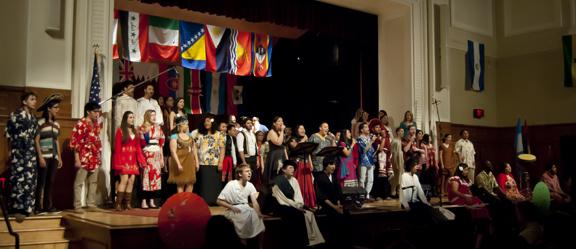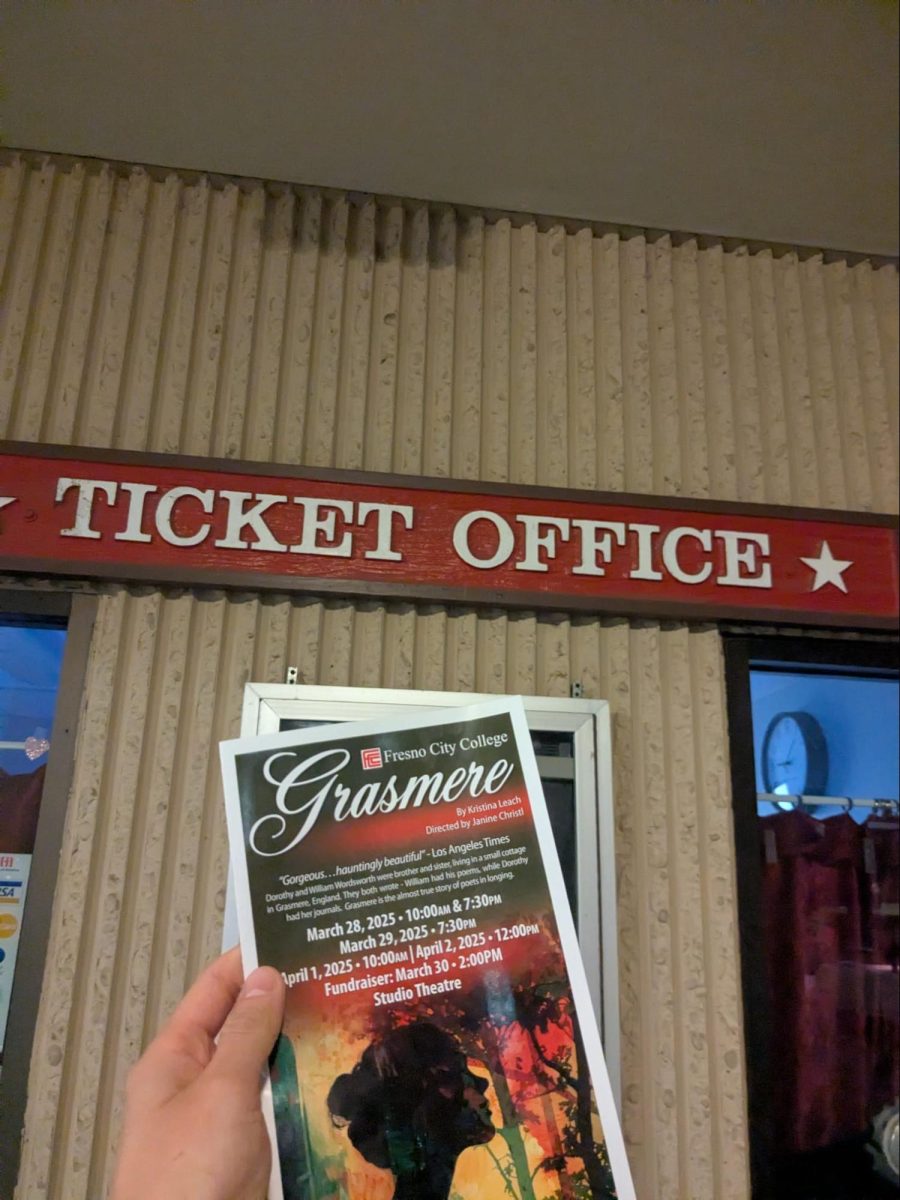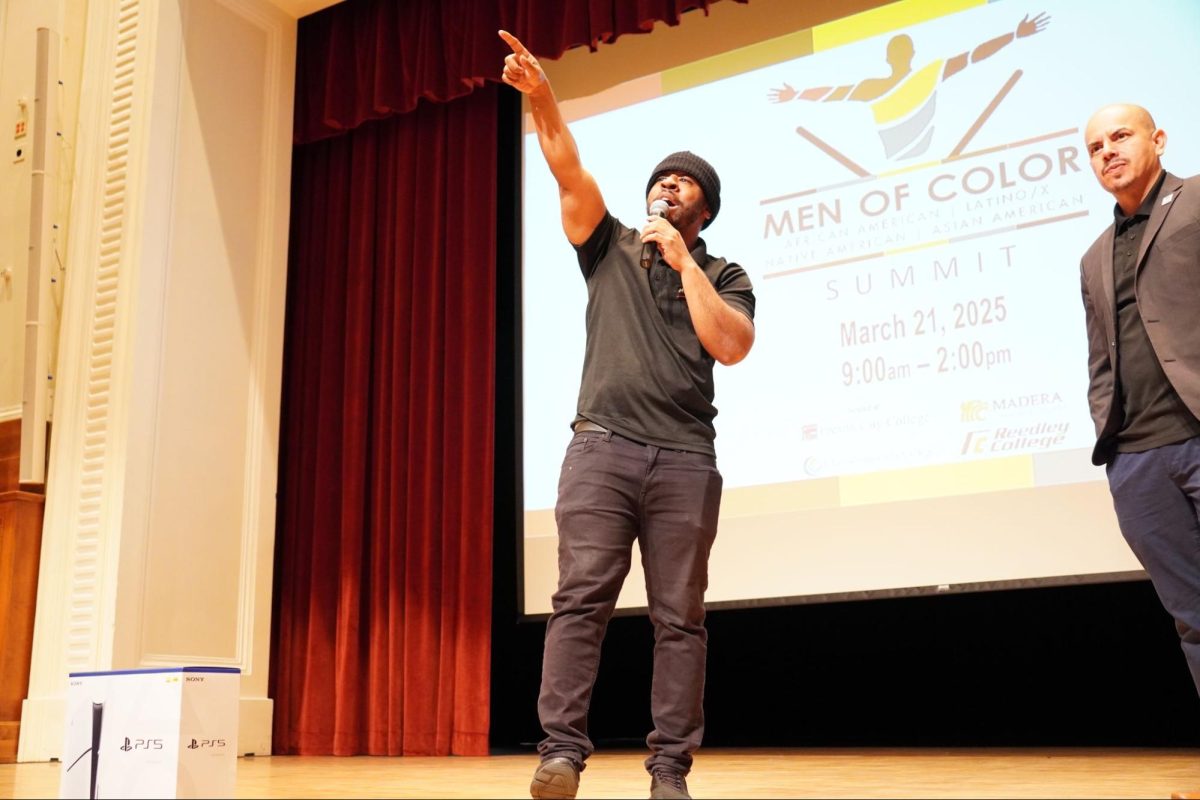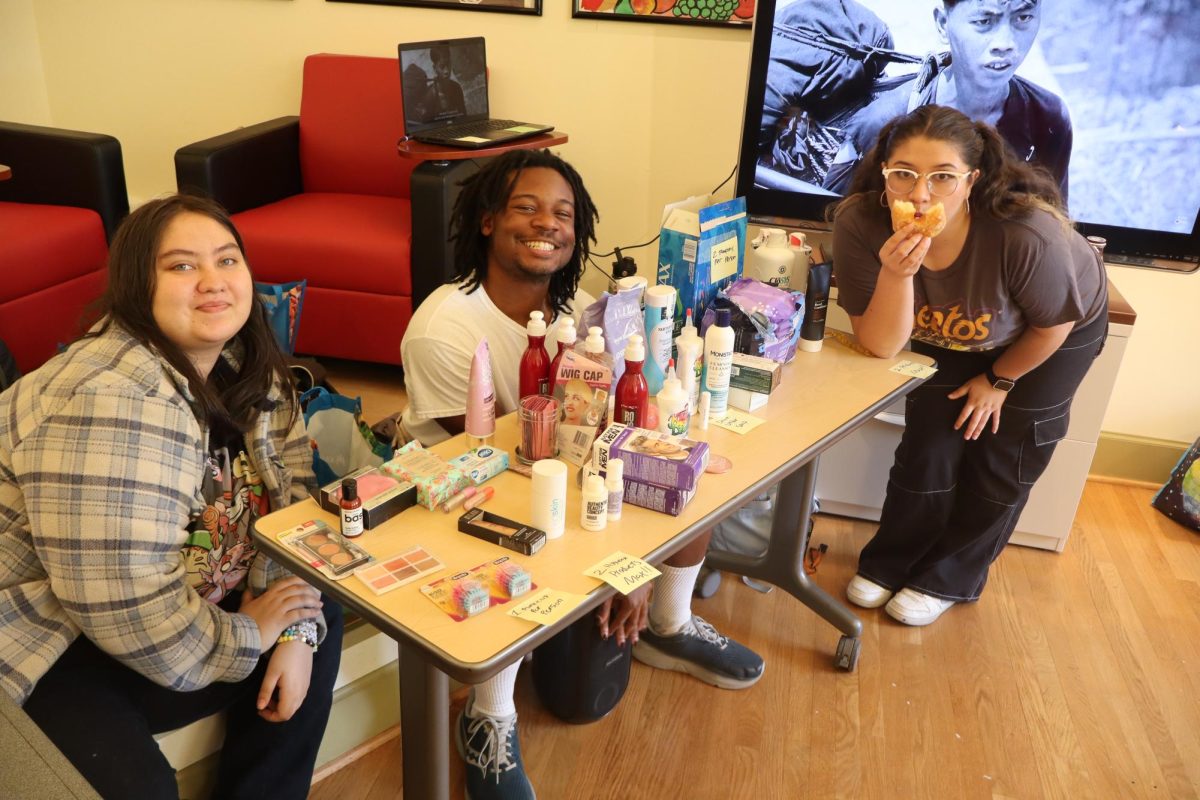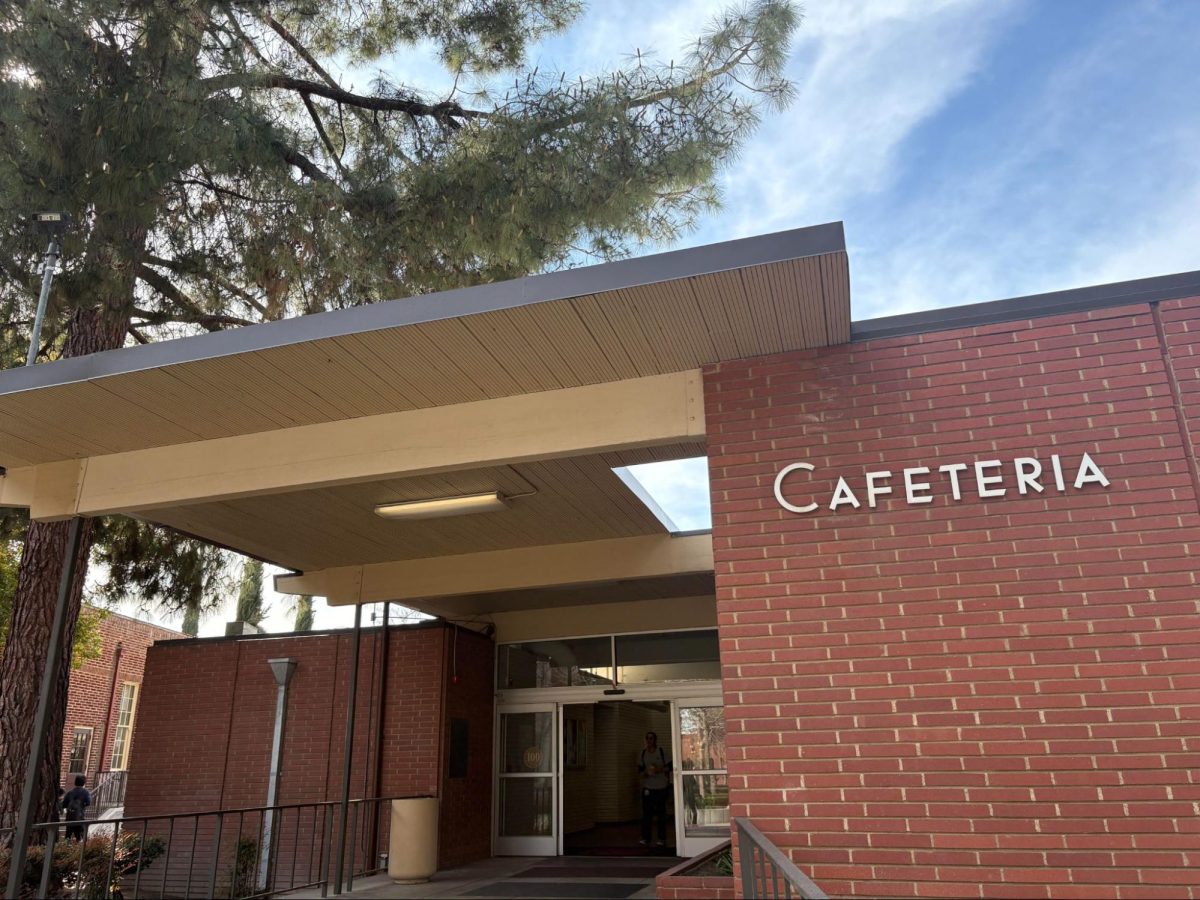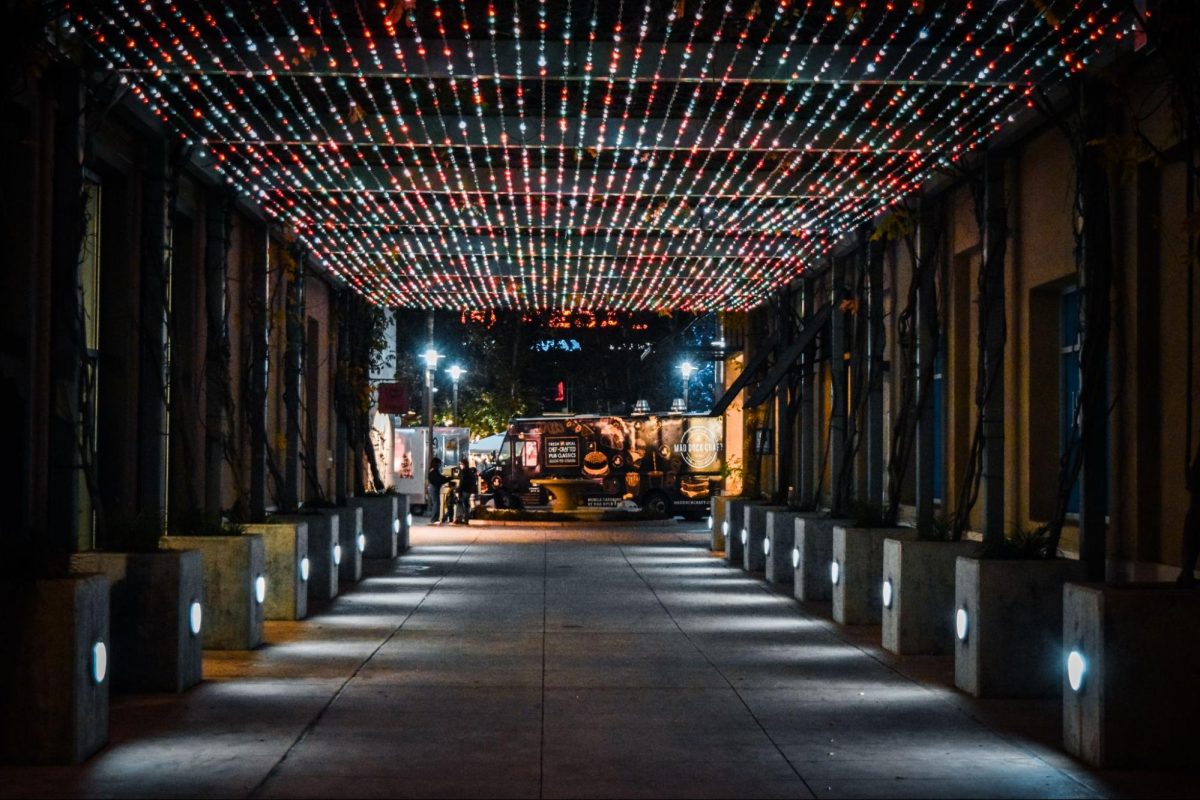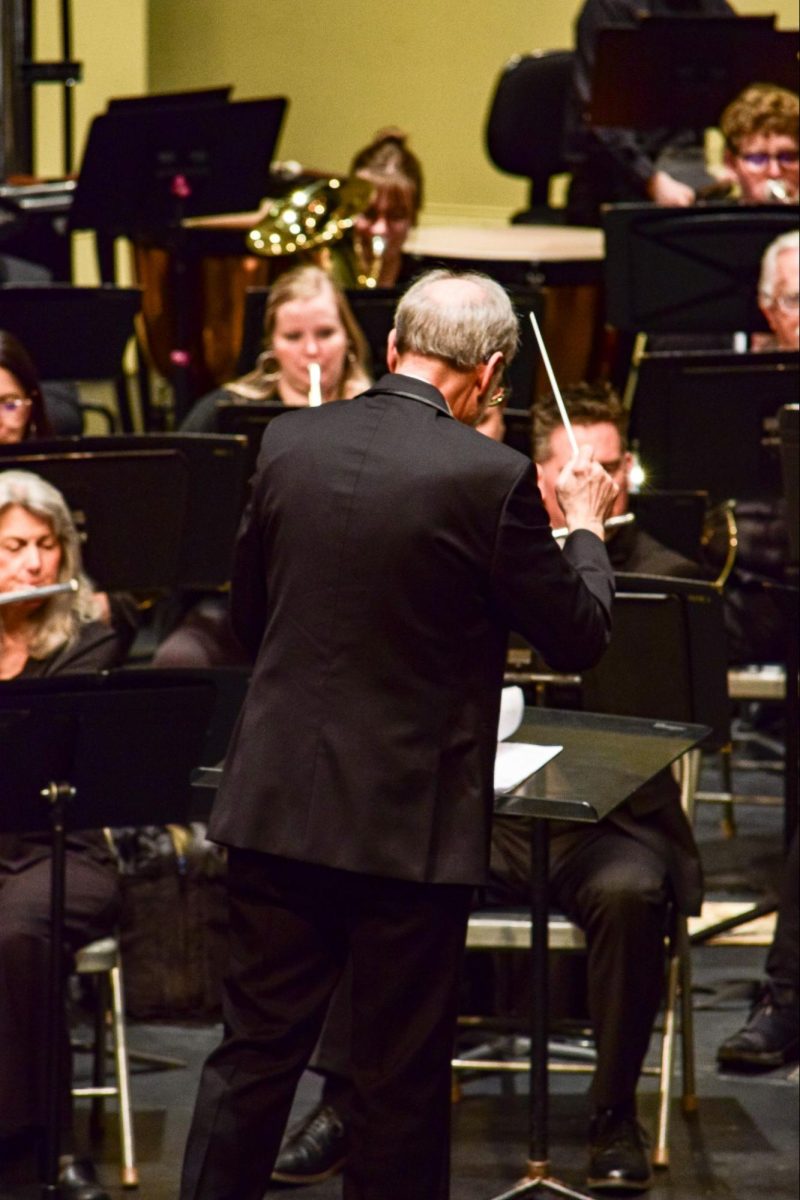The Fresno City College Symphonic Choir paired with the City Singers and several guest artists for a vocal tour of world music in their performance of “Trip the Light: A Concert Tour Around the World” on March 5.
More than 70 singers took the stage in the Old Administration Building Auditorium to perform songs from 11 countries. The vocalists were joined by several guest instrumentalists, including FCC music instructors and two FCC guitar students.
Performing such a diverse range of song in such a large group is not without its challenges. For the program, singers learned a different language for nearly every piece they sang.
“Throughout the years, we’ve probably sung in 70 languages. We try to pick a variety of them and go around the world. I try to find something that challenges them, and obviously the language is a big thing,” said Julie Dana, director of FCC choral ensembles.
tudents in the ensembles agree that learning a variety of languages is difficult.
“The language part is the hardest, because so many people are from different cultures, and the way you pronounce words [is different]. And then you have to learn this song and you have to make it right. It was very challenging,” Symphonic Choir member Katrina Cherkasskikh said.
However, the challenge does end with learning pronunciations.
“I expect them to sing that language with recognition of what they’re saying,” Dana said. “That’s the real challenge, not just learning the language, but putting the meaning of language at the same time.”
This is the eighth annual “Concert Tour Around the World” that the FCC music department has held. Dana continues to incorporate this event into each year’s performance schedule because it provides the students with an opportunity to embrace the many cultures within their choir and their community.
“They represent our school, and our school represents our community. And they’re all up there together, doing their thing and learning about one another,” Dana said. “Our community is so diverse, and I think it’s important to celebrate that,” she added.
Much diversity was reflected through the inclusion of folk pieces, which introduce aspects of culture to the songs.
“It’s just fun to see what other cultures like to do; the music they listen to and the music they make,” said Cherkasskikh.
However, folk song also provides students with important lessons about the reality of life in other cultures and other times.
“It gives them history, I think, and a different way of looking at life,” said Dana. “[Some music] was all part of apartheid. People were in prison because they were black, and still they sang. Still they sang,” she added.
The opportunity to learn about one another’s cultures can prove as valuable to the students as the opportunity to expand their musical knowledge.
“It just applies to all of us and makes us feel like we’re all family,” Symphonic Choir member Elina Boginski said.

